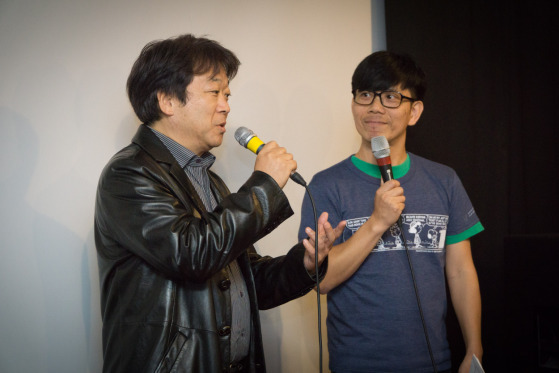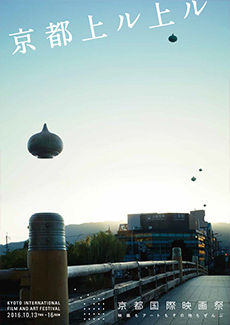Warner’s List Shines a Light on History
2016/10/14 Report

The Kyoto International Film and Art Festival saw the Japan premiere of Kenji Kanetaka’s Warner’s List, a wonderful historical documentary that focuses on men who made great efforts to protect Japanese cultural properties before and during WWII. Including interviews with academic figures, reenactments, and historical footage, the film delves deep into Japan’s history from the turn of the century to the post-WWII era. Despite the educational nature it is highly entertaining.
The received historical understanding has been that Langdon Warner (1881-1955), and American archeologist and art historian, played a great role in saving Japanese cultural artifacts, especially the entire city of Kyoto, by advising the American government not to bomb the areas. The titular list in one of culturally important places that Warner created for the US government and it no doubt played a role in sparing those locales. But the film investigates deeper to reveal that many had a voice in influencing the government and Warner’s role may have been overstated at times. Warner himself suggested that he was part of a team that spearheaded the efforts to save the treasures, though some scholars attribute the statement to the man’s modesty.
The documentary also delves into the life of Sergei Elisséeff (1889-1975), a Russian-French scholar of Asia who became the first director of the Harvard Yenching Institute. The movie provides evidence that Elisséeff, through his contacts in the US government and powerful scholars, was able to save the book-selling area of Tokyo called Jimbocho. The role of books in Japanese society has long been an important one and the Jimbocho district is filled with new and used bookstores. Despite the fact that Tokyo was flattened by fire bombing the district remained almost perfectly untouched, thus preserving a crucial supplier of Japan’s book culture until the present day.
The film puts these men’s efforts in historical context by outlining the situation that led to the US-Japan conflict in WWII. Particularly the actions of the two governments and Roosevelt’s letter to Emperor Hirohito, which arrived too late, are examined. The piece also includes reenactments of scenes, both of famous men and those caught in the upheavals, illustrating the times.
Entertaining, enlightening and educational, Warner’s List is full of insight into Japanese-international relations and how some of the Japanese cultural treasures were about to survive the war. It’s focus on scholars of Japan, and the contributions they made to Japanese society, is long overdue.

- Facebookでシェア
- Twitterでシェア



